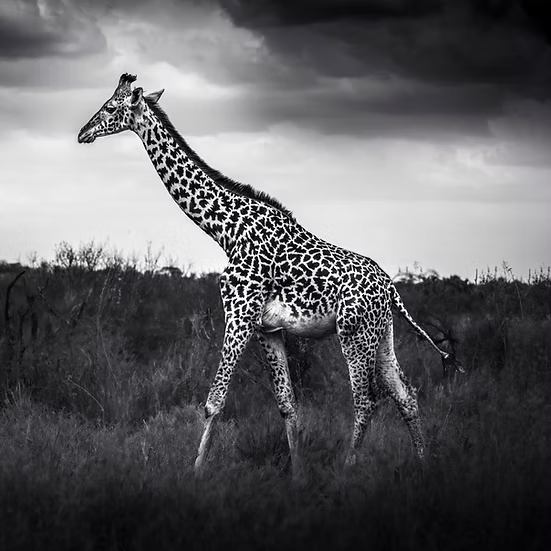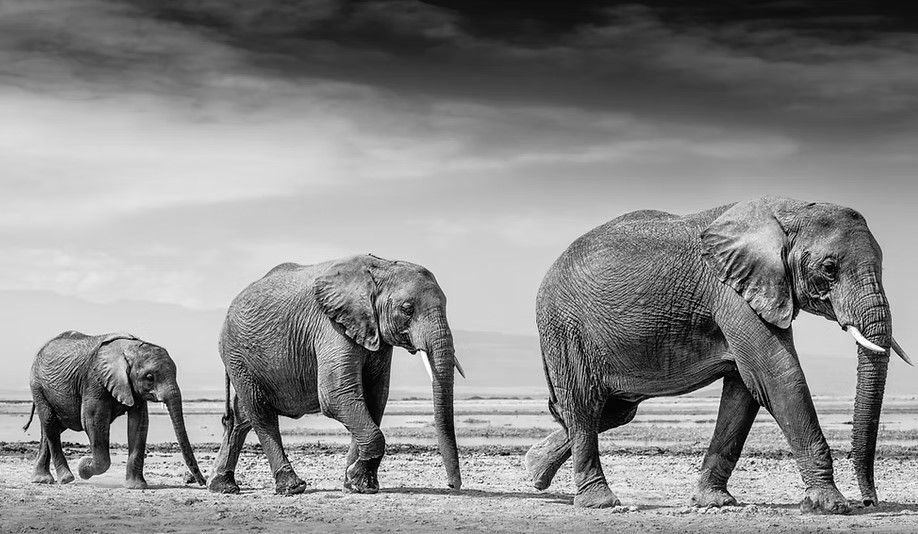Fine art wildlife photography continues to draw global attention, captivating collectors who seek more than just decoration.
These prints provide an emotional and visual connection to the natural world, transcending simple aesthetics.
As demand grows, collectors are discovering how wildlife photography can reflect personal values, taste, and a reverence for the untamed.
The Essence of Wildlife Fine Art Photography

Wildlife fine art photography brings together visual storytelling, technical precision, and emotional depth.
Artists capture animals in their natural habitats with intentionality, choosing moments that reflect:
- Grace
- Struggle
- Stillness
Every element within the frame carries weight, light, posture, gaze, and environment, all converge to shape the final image.
Several core characteristics define this style and distinguish it from general nature photography. These features include:
- Dramatic composition that draws attention to the subject with thoughtful framing and spatial balance
- Masterful lighting techniques, often using natural light to create mood and atmosphere
- Authentic representation of the animal’s presence, behavior, and emotional expression
Emotional storytelling remains central to this form of art. A single frame might express survival during a harsh winter, maternal care in the wild, or solitary reflection beneath a setting sun.
Photographers wait for instinctive gestures, a lion’s protective stare, an elephant’s lumbering walk, a wolf’s alert stillness.
Black and white photography plays a distinct role in enhancing emotion and form. By removing color, attention shifts to lines, textures, and shadows.
Notable artists such as Johan Siggesson Fine Art Photography masterfully use monochrome techniques to evoke emotion and accentuate wildlife presence through timeless, minimalist expression.
Contrast adds intensity, while softness in tones offers introspection.
In many collections, monochrome pieces carry a meditative quality that amplifies stillness and power.
Viewers frequently describe visceral reactions when viewing wildlife prints. In home and office settings, these works evoke grounding emotions, creating a counterbalance to modern life’s chaos. Common emotional responses include:
- Calmness, as large-format prints of sleeping big cats or silent tundras offer mental rest
- Inspiration, especially through images of rare or endangered animals
- Awe and respect, triggered by close-up portraits of intelligent, soulful eyes
What Makes Wildlife Prints Valuable to Collectors

Value in wildlife photography prints comes from more than beauty.
Several key elements contribute to why collectors seek out these works, making them meaningful investments and cherished possessions.
One of the most significant factors is limited edition exclusivity.
Collectors place high importance on rarity. Most wildlife fine art prints are released in small editions, usually:
- 5 to 25 prints per edition, ensuring scarcity
- Each print signed by the artist, offering direct connection to the creator
- Certificates of authenticity, verifying legitimacy and edition number
Smaller editions translate to stronger resale value, prestige, and emotional satisfaction.
Collectors know they own something not widely available, crafted with purpose and intention.
Artistic value also depends heavily on craftsmanship and technique. Unlike mass-produced posters, wildlife fine art photography is produced with museum-quality standards.
Materials used include:
- Archival cotton rag papers known for durability and texture
- Pigment-based inks, resistant to fading and known for color fidelity
- Professional printing processes, often handled personally by or under the guidance of the artist
Each photograph becomes a long-lasting object. Collectors appreciate not only the image but the material integrity, how the print holds depth, weight, and detail under varying light conditions.
Production choices matter. Paper weight, texture, gloss level, and framing methods all affect the visual impact. Meticulous presentation ensures that prints maintain presence in any environment, holding their place as centerpieces or complements in a curated space.
Iconic Subjects in Wildlife Photography

Subject choice greatly influences the impact and desirability of wildlife fine art photography.
Collectors are naturally drawn to animals that symbolize strength, grace, mystery, or survival.
Certain species consistently emerge as favorites because of the emotions they evoke and the visual power they carry.
Among the most collected animal subjects are those that embody majesty and presence. Artists often focus on:
- Lions, associated with dominance, nobility, and familial structure
- Elephants, symbols of memory, intelligence, and calm strength
- Tigers and cheetahs, representing motion, focus, and power
- Wolves, often linked to loyalty, wild instincts, and quiet observation
Photographs of these animals often highlight their unique features—textured fur, intense eyes, or postural strength.
Close-up portraits isolate those traits, while wider compositions may show movement across terrain or interaction within a group.
Collectors also gravitate toward endangered or elusive species. These subjects bring not only visual intrigue but a sense of urgency and meaning.
Art featuring such animals becomes part of a larger narrative, awareness, preservation, and reverence. Common conservation-driven subjects include:
- Snow leopards, known for secrecy and grace in rugged terrains
- Black rhinos, often portrayed with grit and defiance
- Pangolins, whose shy nature contrasts with powerful environmental symbolism
Connection often goes deeper than admiration. Many collectors choose animal subjects that reflect personal experiences, childhood memories, spiritual beliefs, or emotional alignment.
Some feel a lifelong bond with wolves, others find comfort in the presence of elephants.
Styles and Presentation Options
Wildlife photography offers a broad range of visual approaches, allowing collectors to curate based on artistic preferences, emotional tone, or spatial compatibility.
Style selection often defines how a piece will be experienced, whether through intimacy, grandeur, detail, or abstraction.
Photographers use various methods to portray wildlife in distinct visual formats. Common photographic styles include:
- Portrait photography, capturing close-up facial expressions and emotional cues
- Macro photography, revealing intricate textures such as fur, feathers, or skin patterns
- Panoramic shots, showcasing an animal within a sweeping natural backdrop
- Photorealistic styles, focusing on sharpness and high-resolution detail
- Long exposure photography, used to introduce motion and atmosphere through creative blur
Each approach evokes different emotional responses. Macro brings the viewer close, highlighting the overlooked. Panoramic compositions add context, scale, and movement.
Portraits draw the eye toward emotion, often creating a powerful, soulful presence on the wall.
Color choices significantly influence tone. Collectors often choose between full color or monochrome based on mood and aesthetic goal.
Color photography captures natural vibrancy, golden light, vivid eyes, saturated environments. It often enhances realism and draws attention tothe environmental context.
Black and white photography offers depth, drama, and timeless elegance. By removing color, the image focuses on form, contrast, and mood.

Monochrome works often convey a stronger emotional current through shadows, lines, and simplicity.
Presentation medium further impacts visual effect and spatial harmony. A photograph printed on the right material can elevate its presence and tactile quality. Collectors typically choose from:
- Metal prints, which provide a glossy, reflective surface with high contrast and durability
- Acrylic prints, offering sharpness, luminous color, and a sleek, modern appearance
- Canvas, ideal for a softer, painterly feel with subtle texture
- Framed fine art prints, allowing for traditional display with customizable matting and borders
Selection often depends on the interior environment where the piece will reside. Modern spaces often benefit from acrylic or metal. Rustic or warm-toned settings harmonize well with canvas or wood-framed prints.
Curating a Cohesive Wildlife Art Collection
Building a wildlife art collection involves more than acquiring visually pleasing pieces. Thoughtful curation brings cohesion, rhythm, and intent into a space.
Collectors often aim to create a visual dialogue across multiple prints, one that reflects their values, aesthetics, and emotional sensibilities.
Successful collections typically follow a unifying thread. This may come through subject selection, visual tone, regional focus, or even symbolic meaning. Common curatorial themes include:
- Grouping by species, such as big cats, birds of prey, or primates
- Regional focus, featuring animals of Africa, the Arctic, or North America
- Color palette alignment, using earth tones, monochrome works, or high-contrast imagery
Unifying themes create visual flow and allow individual prints to complement rather than compete with each other.
For example, a series of black and white portraits of predators builds tension and strength, while a group of pastel-toned shots of antelope or foxes offers serenity and lightness.
Harmony with interior design is another key consideration. Wildlife photography carries emotional weight, so its placement within a space must respect scale, color, and balance.
To maintain cohesion, collectors often consider:
- Scale of each print, matching print size to wall dimensions and viewing distance
- Frame materials and finishes, ensuring consistency or deliberate contrast within a display
- Lighting conditions, both natural and artificial, to enhance texture, contrast, and depth
Large-format prints often anchor a room and serve as visual focal points. These pieces might sit above a fireplace, in a dining area, or behind a sofa, demanding attention without overwhelming.
Smaller prints work well in transitional spaces such as hallways, staircases, or home offices.
The Bottom Line

Fine art wildlife photography offers collectors a portal into nature’s spirit.
Each print represents more than a technique; it captures:
- Essence
- Emotion
- Intent
Investing in these pieces allows for personal expression, space enhancement, and the quiet honoring of wild lifeforms.
Wildlife art bridges nature and human experience, making every collection a tribute to connection, beauty, and meaning.







